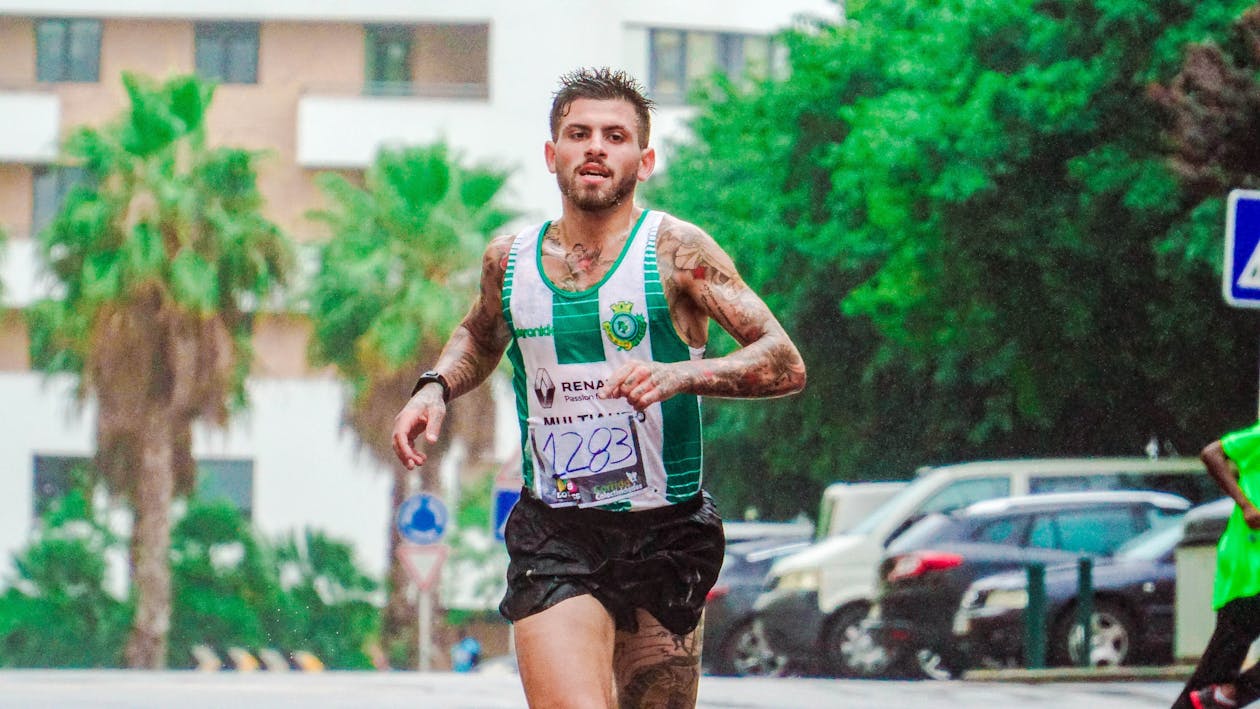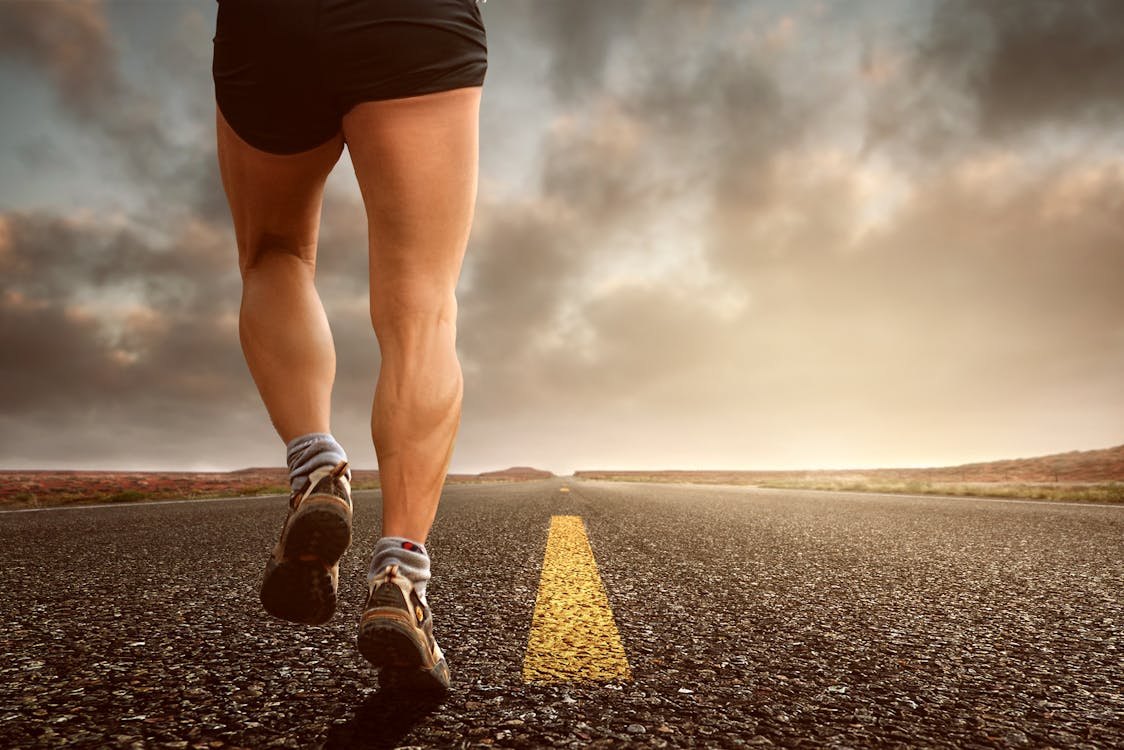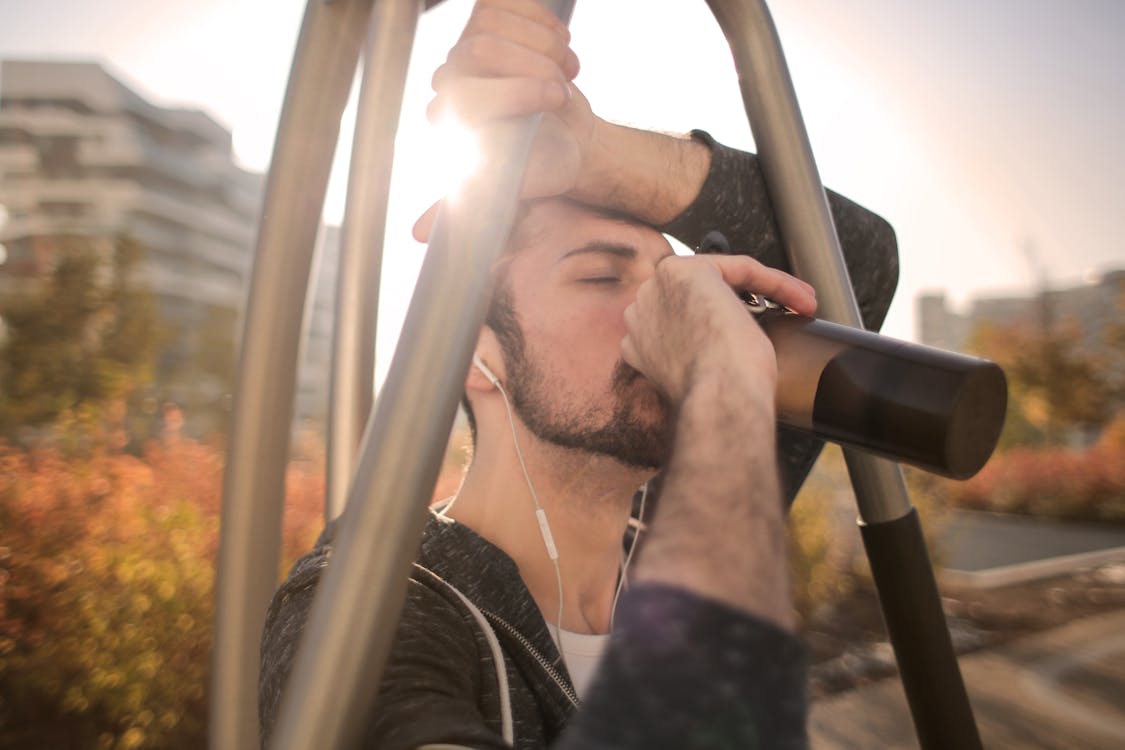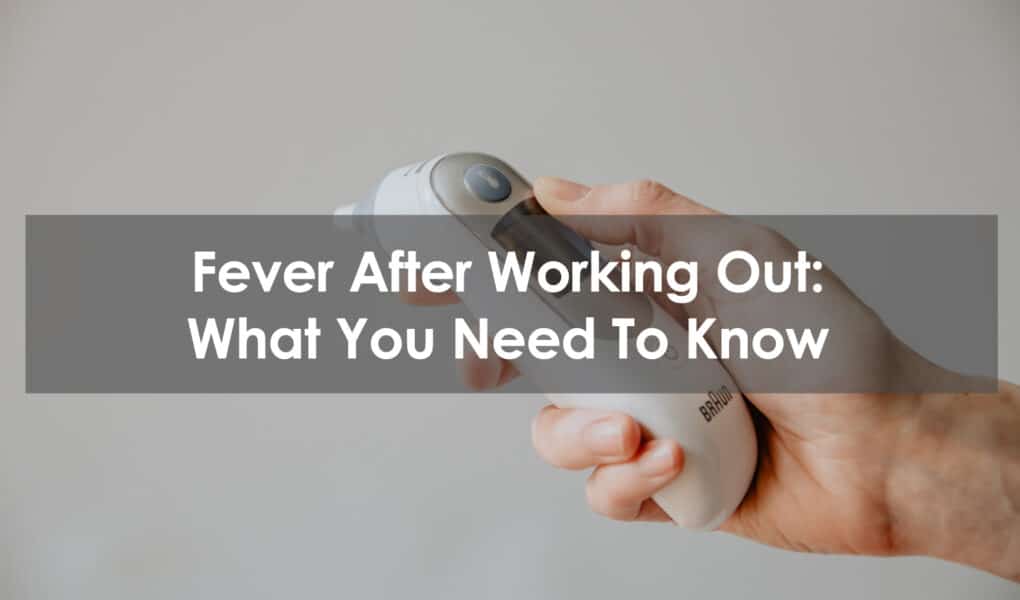After a workout, you should be feeling pretty exhausted. Your muscles should also be aching from the stress you have placed upon them. Those are both signs that you’ve had an effective workout. But what about if you walk away from your workout with muscle fever?
That’s not so good. In fact, it could be your body telling you that you are in an overtrained state.
Knowing the difference between a normal elevation in body heat post workout and a fever that indicates something more serious is critical. This article will help you to identify that difference, as well as provide some important tips on how to bring your body temperature down after your workout.
Why You Heat Up When You Work Out

Working out places demands on your body to produce more energy. To do so, it converts calories into heat. As a result, your core body temperature rises. The more intensely you exercise, the hotter your internal body temperature will become.
A key mechanism that the body uses to control heat is sweating.
When Overheating May Become a Problem
Overheating, or possible heat stroke is more likely to occur when people are working out in the hot summer weather. If this environment is combined with an extremely intense, long workout, the trainer may experience an unhealthy increase in body temperature. This condition is called external heat illness (EHI).
Olympic athletes and other high-level performers are prone to suffer from EHI when they compete in hot, humid environments that they are not used to. That is why they spend several months acclimatizing to those conditions before the games begin.

Compounding the problem is the fact that you will sweat a lot more in a hot and humid environment. Unless the water and electrolytes that you are losing through sweat are replaced, your body will struggle to return to a normal body temperature. This can result in heat stroke, which is a very serious condition indeed.
Even though fever after exercise is more common in hot environments, it can also affect people in cooler temperatures. This may occur when a person wears a lot of workout clothing to stay warm and then performs a prolonged high-intensity workout. Those extra layers will not allow the body to properly cool off.
Related Conditions
Exertional heat illness is an umbrella term that encompasses three key conditions:
- exercise-induced cramping of the muscles
- exertional heat exhaustion
- exertional heat stroke
The difference between the latter two comes down to the individual’s body temperature. If the temperature exceeds 104°F (40°C), a person is classified as suffering from exertional heat stroke. A high temperature that is less than that is a symptom of heat exhaustion.

It is important to point out here that people differ in their ability to cope with elevated internal body temperature. So, the fact that they have not reached a temperature of 104°F should not cause the individual or those caring for him to lessen the seriousness of the condition.
What To Look Out For
Often the first symptom leading to heat exhaustion or heat stroke is cramping of the muscles. When this occurs, the most effective treatment is to stop exercising, rest the muscles, and hydrate the body.
Other symptoms that may indicate heat stress are dizziness, feeling lightheaded, nausea, stomach cramping, diarrhea, severely impaired exercise performance, an excessive amount of sweating, headaches, and the person hyperventilating.
A person who is suffering from exertional heat stroke, where the peak temperature is more than 104°F, may exhibit the following additional symptoms:
- impaired range of motion
- extremely exhausted muscles
- muscle weakness
- acute muscle soreness
- feeling disoriented and confused
- out of character aggressive or irritable actions
- hot, clammy skin
- vomiting
As can be seen from these symptoms, this is a serious, potentially life-threatening condition. The person should be immediately taken to the nearest healthcare provider.
Delayed Onset Muscle Soreness

Delayed onset muscle soreness (DOMS) is a natural condition after a workout. It refers to the muscle ache that you experience for several hours after your training session. This is normal and does not indicate that you are suffering from heat stress.
DOMS symptoms include intense pain in the worked muscle for a couple of hours after the workout that dissipates over time. This exercise-induced muscle damage is a signal that your body has been sufficiently stressed because of micro-tears in your muscle fibers. These will be repaired with proper post-workout nutrition.
Drink More Water

You can prevent overheating during and after a workout by staying well hydrated during your exercise session. It is a good idea to drink a liquid that has added electrolytes as these will be lost through sweating. Sip from this drink in between your workout sets.
Be careful not to drink too much during your workout as this may dilute the levels of electrolytes and make you feel faint.
Many people do not even realize when they are dehydrated. If you feel thirsty, it is a sign that you are already in that condition. You can also check your urine. The darker it is, the more water you should be drinking.
If you have a sporting competition or event coming up, it is a good idea to drink a good supply of water a few hours before the event will. We recommend taking in about 6 mL of liquid per KG of body weight. During the event, you should stay hydrated. Afterward, you should take about 1.5 L of liquid for every KG of weight that you have lost during the session.
Eating to Prevent Muscle Fever

If you don’t provide your body with the proper nutritional resources, you will struggle during your workout and may feel nauseous. The lack of proper nutrition will also contribute to overheating and possible heat exhaustion. You should not, however, eat a large meal within 45 minutes of exercising.
You can have a small energy-packed piece of food within 20 minutes of working out. This could be a banana or an energy bar.
If possible, have a more substantial meal 2 to 3 hours before your training session. This should include a 50-50 mix of complex carbohydrates and lean protein. Do not include fats as they will slow down your digestion.
Within an hour or two of your workout, you should have another substantial meal. Once again that should be a 50-50 blend of carbohydrates and protein.
Conclusion
The combination of intense exercise and environmental heat can lead to serious overheating of the body. To prevent this from being a problem in your case, be sensible about working out in intensely hot conditions.
If your city is experiencing a heat wave, don’t be afraid to skip your workout that day. If you are going to train, make sure that you are well-fed and hydrated. Also, try to train in an area with good air-conditioning and a fan to cool you. Wear light clothing that will work away moisture to keep your body dry.
What are the main DOMS symptoms?
The main DOMS symptoms after intense exercise are a pain in the working muscle and possible limited range of motion for a short period of time. This is completely natural and should go away after a few hours.
Is heat stress serious?
Yes, heat stress should always be taken seriously. If you feel any of the symptoms mentioned in this article, you should stop exercising immediately, rest your muscles and hydrate your body. If you continue to feel nauseous, have uncontrolled muscle cramps or continue to field disoriented and confused, get yourself to a healthcare professional.
At what temperature does exhaustion become heat stroke?
Heat exhaustion officially becomes heat stroke when a person’s temperature reaches 104°F (40°C). This is a very serious condition that requires immediate medical treatment.



